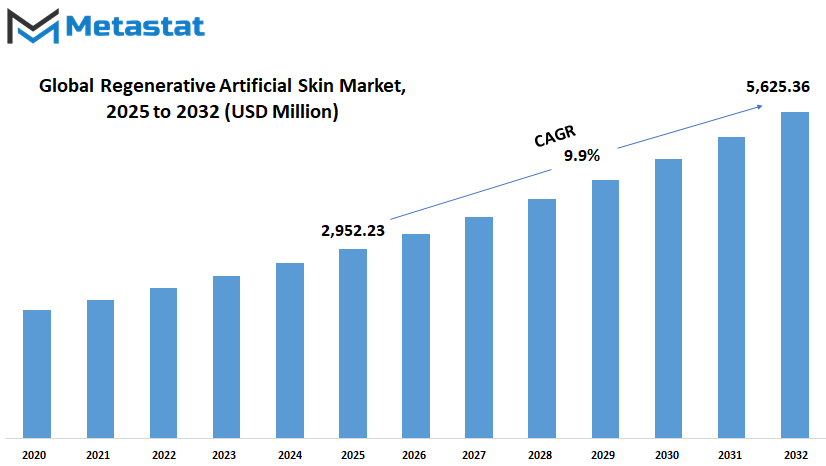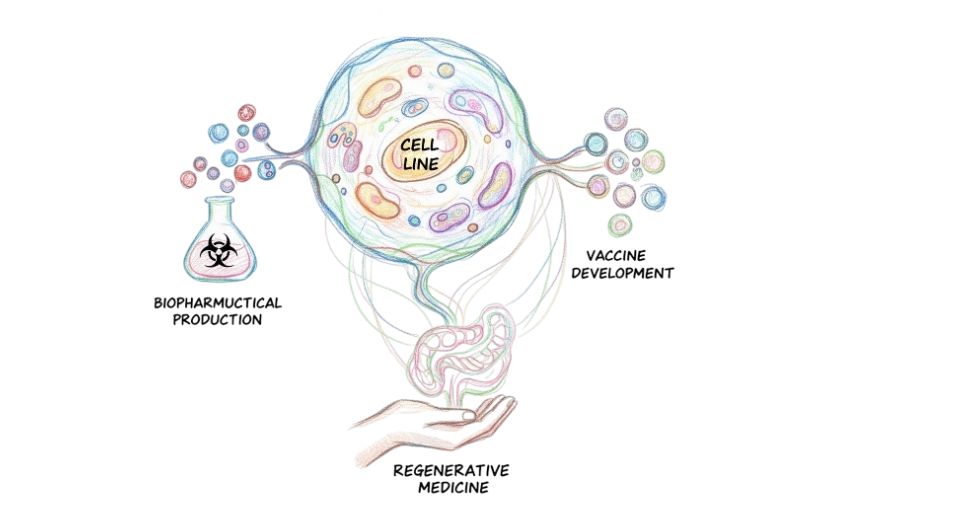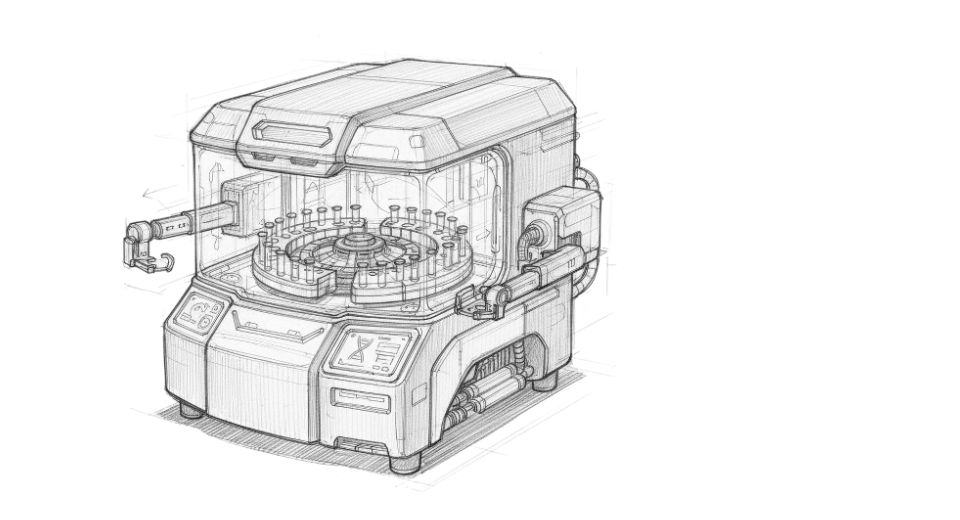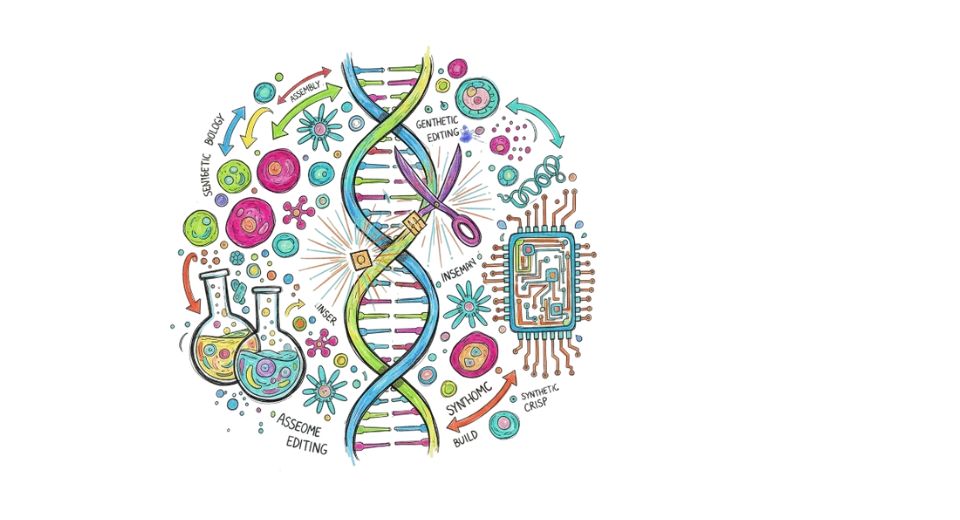MARKET OVERVIEW
A miniaturized yet highly sophisticated section of medical science dedicated to advanced solutions in skin repair and regeneration is that located within the Global Regenerative Artificial Skin Market and Industry. This market offers the research and development of a bioengineered skin substitute and its application as replicas of the natural structure and functions of human skin. These advanced products are useful for the treatment of severe skin injuries, chronic wounds, and other conditions in need of skin grafting. The incorporation of biomaterials and cell and growth factors into regenerative artificial skin will provide very promising alternatives to the traditional skin graft procedure.
As advances in medical technology take place, the Global Regenerative Artificial Skin market will also witness substantial advancement along continuous research and development. This definitely indicates that an organization in this industry would formulate skin substitutes that cover the wound, thus aiding natural healing and repair of the corresponding tissue. Engineered skin constructs will then lead to improved patient outcomes such that infection risks are minimized, recovery times are reduced, and the cosmetic and functional quality of the repaired skin are enhanced. The array of products that can be included in the market ranges from acellular dermal matrices to composite skin substitutes and even biosynthetic products that will be tailor-made to address special medical needs.
The Global Regenerative Artificial Skin market generally promises to extend into multiple fields of medical action like dermatology, plastic surgery, and burn care. It would offer both acute and chronic skin conditions including third-degree burns, diabetic ulcers, and surgical wounds. The outreach of the market will be in hospitals, specialized burn centers, and outpatient clinics, proving that skin regeneration solutions are possible within the grasp of the general public. Future innovations will lead to further development of personalized skin grafts, which will use cells derived from the patients themselves to minimize the risk of rejection and enhance compatibility.
Henceforth, the future of the Global Regenerative Artificial Skin market will be affiliated with increasing application of advanced biomaterials and tissue engineering methodologies. Stem cells will be added with the aid of bioprinting technologies in the 3D position to enable bioengineers to produce substitutes mimicking as close as possible the physiology and mechanics of natural skin structures. This, in turn, will rescale the market potentials to prescribed treatment of patients individually, encouraging innovative approaches to the broader concept of regenerative medicine.
Gradually, as developments emerge in the regulatory environments to favor the invention and adoption of novel products for skin regeneration, the potential will be expanded for this market. Such partnerships would be strengthened to create value not only in knowledge sharing and usage but also in the translation of experimental treatments to the clinical arena. This partnership would not only accelerate the market but also improve its accessibility.
In addition to advancing technology, the Global Regenerative Artificial Skin community increasingly focuses on affordability and scalability as priorities. Production costs and manufacturing processes streamline to reduce price points, which should open regenerative skin products to a wider patient population. That will go a long way toward relieving worldwide demand for sound solutions in both wound care and reconstructive solutions.
The future of the Global Regenerative Artificial Skin market will depend on how it innovates, the partners it speaks with, and the evolving medical needs that it can meet. Research breakthroughs will still come pouring into this market even as it remains innovative and collaborative, which in turn will change the world’s definition of skin regeneration, offering them hope and an improved quality of life.
Global Regenerative Artificial Skin market is estimated to reach $5,625.36 Million by 2032; growing at a CAGR of 9.9% from 2025 to 2032.

GROWTH FACTORS
Huge growth is expected in the Global Regenerative Artificial Skin market in the next few years, owing to medical need and technological advancement. As it stands, the fast-transforming healthcare sector requires an immediacy of innovative treatments that can significantly impact the outcome of patients. One of the key drivers of market growth is the increasing incidence of burn injuries and chronic wounds across the globe, which often require specialized care and long-term treatment. Skin regeneration serves as an essential component in facilitating recovery from these conditions. On many occasions, conventional methods of wound care have been labeled inadequate to secure proper healing and it is much more interesting to contemplate alternatives centered around artificial skin solutions.
Biotech advances are a key driver for the new development of this market. The more advanced the R&D, the better and the more flexible regenerative treatments can be developed. The scientists are evaluating different materials and approaches to make the artificial skin simulate properties of natural skin to a greater extent. This includes sufficient elasticity, adequate integration into the body of the patient, and optimal healing. Given the newer avenues of these innovations, it is expected that with time these solutions will work better in terms of comfort for the patients, allowing better and faster recovery for them.
Notwithstanding the very positive, if not bright, future projected, there still exist numerous challenges that may slow down the market growth. The high cost of production and development stands out among the biggest barriers. The investment needed in research, testing, and manufacturing for the sophistication in the artificial skin creation process to match the medical standards is, therefore, very high.
This translates to high costs for the end products, thereby barring many health service providers and patients from its accessibility. Besides this, regulatory hurdles and lengthy approval timelines may also postpone new products from entering the market. While ensuring product safety and effectiveness before market launch is imperative for the acceptance of artificial skin products, the wasted time and efforts spent for obtaining approvals hinder timely responsiveness of the market to emerging demands.
Conversely, the demand for personalized healthcare solutions presents an incredible opening for growth. Regenerative artificial skin can be modified to respond to specific conditions and requirements. Patients and healthcare providers now want solutions tailored to individual requirements. From this perspective, biotechnology innovations could pave the way for developing individualized synthetic skin grafts that are biologically compatible with an individual patient, thus giving a greater chance for success and lower risk of complications. As this movement progresses, there will be more interest in and investment in the market.
As healthcare continues to enforce the plausibilities from any rationale and reasoned view, right therein, the Global Regenerative Artificial Skin market is the most avant-garde in the army of transforming medical solutions. Thus, with the right mixture of innovation, accessibility, and regulation, this market holds the promise of transforming wound care and skin regeneration for patients across the globe.
MARKET SEGMENTATION
By Product Type
The Global Regenerative Artificial Skin market is certainly promising with timings ahead. Such a boost is expected because of the rapid advancement made in medical technologies along with rising interest in novel healing methods for skin outcome as well as skin disorders worldwide. While healthcare systems are promising to increase the quality of patient care, there is a corresponding demand for alternative skin substitutes that will increase over time. Growth in this market will be spurred by the rising incidence of burn injuries, chronic wounds, and surgical procedures requiring grafting. Furthermore, greater consciousness about advanced treatment methodologies and the need for speedy recoveries will lead to greater acceptance and adoption of these products within the consumer market.
It subdivided the main types into temporary skin substitutes and permanent skin substitutes, both of which learn and work with severe cases of skin injury and skin condition. Temporary skin substitutes are typically used in the short term for wound coverage and acts by performing important functions, such as providing protection and support to allow healing. They lessen pain, prevent infections, and assist in maintaining moisture balance, which is essential for healing.
These substitutes are commonly used in cases in which a patient's own skin regeneration is expected but requires initial support from outside. In stark contrast, permanent skin substitutes are for long-term application and are generally employed in more serious cases where the natural skin regeneration is limited or not possible. They provide a robust coverage that integrates with the body's tissues to operate almost like natural skin.
The strong demand for such products comes across through the financial valuation of the market. Temporary skin substitutes are valued at quite a huge amount, given that they are now implementing use in various medical scenarios all over the countries. Permanent skin substitutes are also valued significantly, indicating that there is good reason for which these kinds of products are in demand for long-term treatment. With such technology advancements, the quality and effectiveness of the products will increase to make them even more interesting for the healthcare providers and patients.
Moving forward, the Global Regenerative Artificial Skin Market is expected to be buoyed by ongoing research and development in creating advanced and efficient skin substitutes. Innovations in biomaterials, tissue engineering, and regenerative medicine will then lead to the development of products with enhanced compatibility, healing time, and lower complication risk. Moreover, with the aging global populace and the rise in the prevalence of diabetes, so will the demand for effective wound care solutions.
In the future, market expansion is further dependent on partnerships between medical institutions and biotechnology or research organizations. Collaboration is fundamental to quick market launches as latest revolutionary treatments become publicly available. Consequently, the Global Regenerative Artificial Skin market will remain one of the key fields of future growth and innovation in the healthcare sector.
By Material Type
The global market for regenerative artificial skin is expected to grow in the future due to medical technologies such as new regenerative treatment methods for treating severe skin wounds and conditions. The role of artificial skin has been developed into an important hope for patients suffering from burn injuries, chronic wounds, and other skin-related issues, as healthcare is moving towards these advanced and effective solutions. The focus of the market is now the discovery of skin substitutes, treating the damaged area and helping the natural way of healing.
Indeed, one of the reasons mentioned above is increasing material use in the manufacture of synthetic artificial skins. Collagen-based artificial skin has been most frequently reported for such applications, considered widely for its biocompatibility. Collagen is a naturally occurring protein present in the skin responsible for cell growth and tissue repair and, therefore, a better option for the development of artificial skin. It mimics the properties of real skin, which is very beneficial concerning the scarring reduction and improvement in the healing outcome. Thus, research will involve more exploration of collagen-based skin toward further efficiencies and availability.
Silicone-based artificial skin includes another major category in this business. Known for its durability and flexibility, silicone-based skin provides the utmost protection for wounds while covering and protecting them. It acts as a protective barrier, allowing the underlying tissue to regenerate while preventing infections from developing. This artificial skin is used only for temporary applications and is highly valued for its easy application type and utility across the board. Keeping moisture retention and protecting that injured area makes it preferred for several medical settings.
Polymeric artificial skin is a more technological advancement in skin regeneration. This is a synthetic skin that attempts to mimic the human skin as closely as possible in respect to its structure and function. This ability of polymeric materials allows one to have a choice of customized characteristics, that may differ in thickness or flexibility or permeability, and can tailor them to specific medical needs. Researchers are continuously working to improve these materials with an aim at better performance and making them even more efficient in promoting natural and rapid healing.
Biologically-derived materials form a huge promise in the Global Regenerative Artificial Skin market. These materials are usually developed from bio-naturals, mainly human-derived or animal-derived tissues. They easily integrate with the recipient body's own tissues to minimize the chance of rejection and hasten the healing response. As researchers develop a better understanding of biological materials, artificial abiotic skin applications can be applied continuously on a broader scale.
In the future, therefore, the Global Regenerative Artificial Skin market will probably be shaped by innovations continued with increased demand for improving treatment options. Ongoing medical research and progress concerning advanced materials and better techniques would therefore revolutionize future patient care and quality of life for those who would rely on skin regeneration solutions.
By Application
With continuous advancement in medical technology and increasing need for innovative treatment approaches, the Global Regenerative Artificial Skin market is expected to undergo tremendous development in the years to come. This market is concerned with the advancement of artificial skin that facilitates the healing and regeneration of damaged or lost skin, which could be due to a number of injuries or medical conditions. The acceptance of regenerative artificial skin is likely to augment as health systems across the globe offer better solutions for patient care, thus being a ray of hope in treating many people.
One of the prime uses for the regeneration artificial skin is treating burn injuries that often cause severe skin loss, requiring significant medical intervention to allow healing. Skin grafting procedures are effective in several instances, but they are often associated with complications, such as the risk of infection and donor-site morbidity. Bi-regenerative artificial skin has promising credentials in providing an option of treatment akin to natural skin, allowing faster recovery with reduced complications. The artificial skin products will perhaps evolve into more convincing products, with the advent of technology, that will render better integration with the patient's body and ultimately allow fast and effective healing in the coming years.
Another vital application is in chronic wound care. Such wounds may arise from various underlying conditions including circulatory compromise or prolonged pressure. Chronic wounds frequently take a longer healing time and pose serious health complications that become problematic if left unattended. Regenerative artificial skin stands as a healing promotion by shielding the wound and nurturing good tissue. These wound healing applications will always benefit from further refinements of the materials and systems under development, which will make them increasingly significant in wound care in the future.
Another expanding field of application is regenerative artificial skin applied to surgical wounds. After major surgery, patients are often at a heightened risk of infection and slowly healing wounds, especially when large skin areas are involved. With this approach, artificial skin can minimize exposure of the surgical site and enhance the speed of recovery, consequentially reducing hospital stay and enhancing the quality of patient care.
Reason for application of regenerative artificial skin changes might include diabetic foot ulcers. These ulcers have a challenging treatment course and could cause significant complications, extending even to amputation. Research into artificial skin will thus provide a lot of hope for treatment capable of promoting rapid healing while complicating recovery with more damage.
Other traumatic injuries, such as those arising from accidents or blunt injuries, are also beneficial. Regenerative artificial skin serves as a dependable solution for the coverage of wounds and tissue regeneration, resulting in better recovery. As technology matures, they will also transform patient care in many medical fields.
By End-User
It is supposed that in coming years, the market for Global Regenerative Artificial Skin would witness high growth due to variable factors like advancement in medical technology and heightened demand for alternative treatment options. As the focus shifts toward better healthcare solutions with a patient-centered approach, the attention for the development of artificial skin is raising. This artificial skin intends to facilitate the healing of chronic wounds, burns, or skin-related afflictions, all attained through mimicking natural skin properties which provide protection and regenerative capability. The possibilities of artificial skin with sustained research and development are shaken, portending hope for recovery and an improved life for the patients.
Implementation of Global Regenerative Artificial Skin being adopted in various medical facilities is one of the gestures contributing to the growth of this market. This expansion would be fuel-to-flames when hospitals are being considered as first in line, taking care of the patients suffering from severe injuries. They have favorably become the primary users of artificial skin, being the very institution that needs advanced solutions of skin repair and regeneration. With the majority of the surgical procedures and involving trauma cases being run in hospitals, they would be a significant market facility stockpiling factors.
The ambulatory surgical centers also stand as one of the key contributors. Following the name itself, the centers provide same-day surgical care, including procedures that would benefit from artificial skin interventions. Their convenience and efficiency appeal to patients seeking specialized treatment. With increasing practice in minimally invasive surgeries, artificial skin applications in this market will likely increase,resulting in faster recovery and minimum stays in hospitals.
Specialty clinics represent yet another important segment of this market. These clinics usually serve patients with specific medical needs, such as dermatology concerns or chronic wounds. The know-how prevailed in these facilities ensures patients get directed and effective treatments, including regenerative artificial skin application. The emphasis on personalized care in a specialty clinic makes those advanced products even more effective in yielding results for patients.
Research institutes form the very foundation of the Global Regenerative Artificial Skin market. The institutions are working tirelessly through studies and clinical trials to enhance artificial skin products with an increased margin of safety, function, and access. Their work promotes the further research and development of more advanced materials and techniques, thus widening the possibilities in regenerative medicine.
The Global Regenerative Artificial Skin market will continue to flourish with the initiation of new technologies and innovative health care systems. The concerted activities of hospitals, ambulatory care centers, specialty clinics, and research institutes ensure the dynamic nature of this market that promises solutions for skin regeneration and patient care.
|
Forecast Period |
2025-2032 |
|
Market Size in 2025 |
$2,952.23 million |
|
Market Size by 2032 |
$5,625.36 Million |
|
Growth Rate from 2025 to 2032 |
9.9% |
|
Base Year |
2024 |
|
Regions Covered |
North America, Europe, Asia-Pacific, South America, Middle East & Africa |
REGIONAL ANALYSIS
Significant growth will happen in the Global Regenerative Artificial Skin market in the coming years with developments in medical technology and the demand for new ways of treatment. Increased needs in effective skin replacement therapies have given rise to the market expected to grow in different areas, each of which will be important in determining its future market space. Growing regenerative artificial skin is a developing part of health care, which is progressively becoming relevant to patients undergoing care for serious thermal and non-thermal injuries, as well as skin diseases. It has growth due to increased awareness of advanced treatment modalities, with active participation from researchers in bringing new quality and efficacy to artificial skin products.
Geographically speaking, almost the entire Global Regenerative Artificial Skin market is dependent on North America, the leading region in this regard because of its considerable healthcare base and a few top medical technology companies. Growth that the US is expected to show will be prompted by much ongoing research and investment in innovative medical systems coupled with their readily acceptance of progressive skin therapies. Canada and Mexico are also contributors to the development of the market by way of continuing healthcare initiatives and increasing access to specialized treatments.
Europe is another major player with significant contributions from countries like the UK, Germany, France, and Italy. Research and development and government support for advanced medical solutions are shaping the outcome of these markets. The increasing number of clinical trials and collaboration between medical institutions and biotech companies also plays a huge part in the advancement of these markets. In all of Europe, the high promise for development remains under innovation and quality healthcare.
Growing as major compendiums in the Global Regenerative Artificial Skin market, countries include China, Japan, India, and South Korea. All of these are improving their healthcare infrastructure as well as their hospital technology at a fast rate. These factors, along with rising population, increasing burn cases, and awareness regarding newer treatments, will boost demand. Heavy investments are coming from regional governments in medical R&D, which is expected to favor rapid growth in the region in the coming future.
Within South America, Brazil and Argentina are capturing the two major markets in the continent. The growing patient access to modern healthcare improvements is expected to enhance and spur market development further. Similar strides are being taken in the Middle East and Africa, with South Africa and GCC countries doing much investing toward different innovations and infrastructures in healthcare.
Overall, the Global Regenerative Artificial Skin market keeps going through steady growth in the light of technological progress and rising world demand. All regions play their own specific value roles for the future of the market, strongly paved by research and development towards the provision of advanced and easily accessible skin treatment solutions in the future.

COMPETITIVE PLAYERS
The Global Regenerative Artificial Skin market will witness phenomenal growth in the coming time, fortified mainly by advances in medical technology and the ever-increasing demand for novel skin treatment options. As healthcare keeps evolving, effective solutions for severe skin injuries, burns, and chronic wounds are coming to the fore. The regenerative artificial skin is a radical innovation in the area, providing accelerated recovery time and an improved quality of life for patients. It is not just about maintaining life; it is about providing a life well lived while giving the body time to join in the healing.
One of the key factors driving the Global Regenerative Artificial Skin market is the burgeoning patient population forming a huge clientele suffering from skin afflictions. Demand for advanced wound care solutions is pressing upon the contraption of an increasing global population that keeps aging. Traditional treatment methods often do not achieve complete healing, leaving the door open for regenerative artificial skin. Regenerative artificial skin refers to the technology that can mimic natural skin properties for high rate of cell regeneration with less risk of infection and scarring. The potential in customer care with these innovations is huge and therefore an area of emphasis for R&D.
A frantic search for advanced R&D, development, and innovations is typical of the competitive nature present within this market. Integra LifeSciences, Smith & Nephew plc, Medtronic plc, Organogenesis Holdings Inc., Zimmer Biomet Holdings, Gunze Limited, and Johnson & Johnson Services, Inc. form the list of major companies of this market. Product expansion and improved quality and effectiveness of regenerative artificial skin are now the objectives of these companies. The materials and methods to produce favorable outcomes for patients are being investigated. Their partnership with industry and clinicians is essential for establishing the technology and advancing it to reach those in need.
The Global Regenerative Artificial Skin market should see an increase in advanced developments in the coming time. Improvements in biotechnology and material science will help the emergence of smart skin substitutes. Personalized treatment approaches may be embraced, wherein the artificial skin product may be tailored according to the specific needs of the individual patents. The continued strengthening of this industry will depend on the combined efforts of medical professionals, researchers, and manufacturers as they push onward to commercialize innovative products. Creating improved healing solutions to enhance the quality of life for patients worldwide is a clear vision for this market.
Regenerative Artificial Skin Market Key Segments:
By Product Type
- Temporary Skin Substitutes
- Permanent Skin Substitutes
By Material Type
- Collagen-Based Artificial Skin
- Silicone-Based Artificial Skin
- Polymeric Artificial Skin
- Biologically-Derived Materials
By Application
- Burn Injuries
- Chronic Wounds
- Surgical Wounds
- Diabetic Foot Ulcers
- Other Traumatic Injuries
By End-User
- Hospitals
- Ambulatory Surgical Centers
- Specialty Clinics
- Research Institutes
Key Global Regenerative Artificial Skin Industry Players
- Integra LifeSciences
- Smith & Nephew plc
- Medtronic plc
- Organogenesis Holdings Inc.
- Zimmer Biomet Holdings, Inc.
- Gunze Limited
- Johnson & Johnson Services, Inc
WHAT REPORT PROVIDES
- Full in-depth analysis of the parent Industry
- Important changes in market and its dynamics
- Segmentation details of the market
- Former, on-going, and projected market analysis in terms of volume and value
- Assessment of niche industry developments
- Market share analysis
- Key strategies of major players
- Emerging segments and regional growth potential








 US: +1 3023308252
US: +1 3023308252






